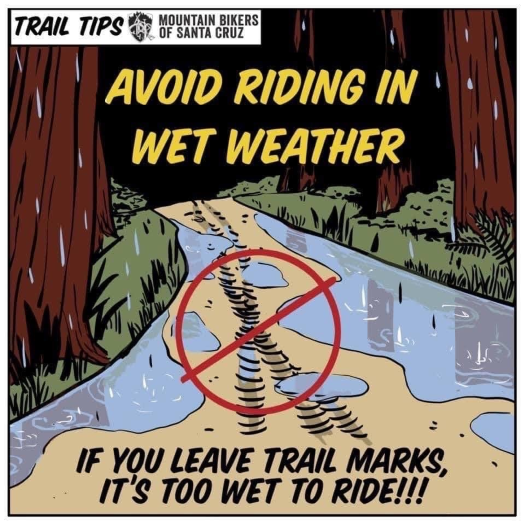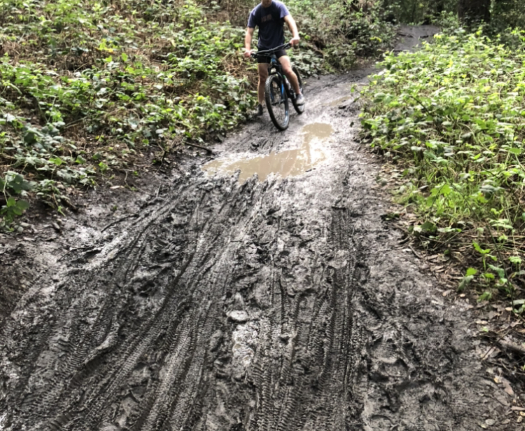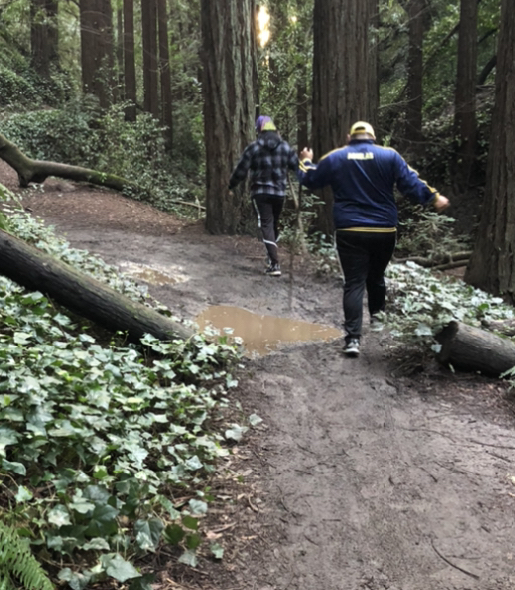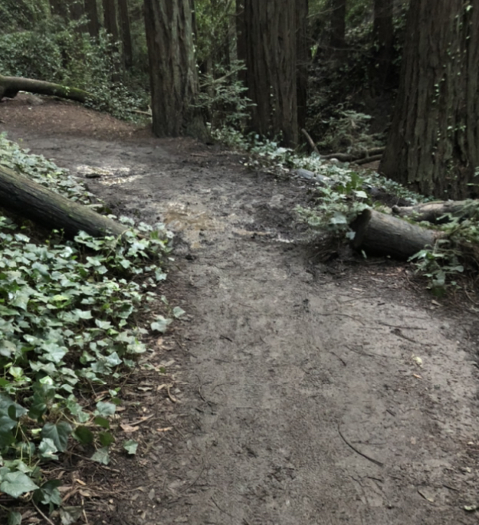By John Roberts, BTCEB Director at Large

Wet is good. Soil is the best to work on when wet, and water flow on the trail can help detect the best places to create better drainage. As soon as rain is predicted to stop, we can help trails be more sustainable. If you would join post-rain trailwork, please email 24@btceb.org and let us know you would like to be on the 24-hour notice volunteer squad.

Do not ride when it’s wet. It’s dangerous and requires far more maintenance. The trail is wet when wheels leave a trace. The trail is wet if mud was flung onto the back of your jersey. The trail is wet when you have to wash your bike afterwards.


We have probably all ridden a trail when it was wet. Hopefully, it was an emotion-packed lesson to not do it again. Instead, upper body workouts are far more preferable when the trail is wet by instead doing trailwork. This also makes trails more sustainable. Joaquin Miller Park trails don’t drain well by themselves. A lot of trail work went into many of the trails that now “drain well”. Let’s make them all like that.
Riding a trail when it’s wet produces more than 20 times the damage compared to when it’s dry. Subtle damage includes flinging puddle water down trail or riding around puddles and widening trails. Wet trails are the favorite landing pad for the devil’s braking bump hammer. One way to avoid creating braking bumps or flinging mud on your back is by simply riding slower when the trail is wet. Even better is to not ride at all. If mud got in your eye, you will know it’s time to pick up a BTCEB tool, and help improve our trails. Is it wet yet?



